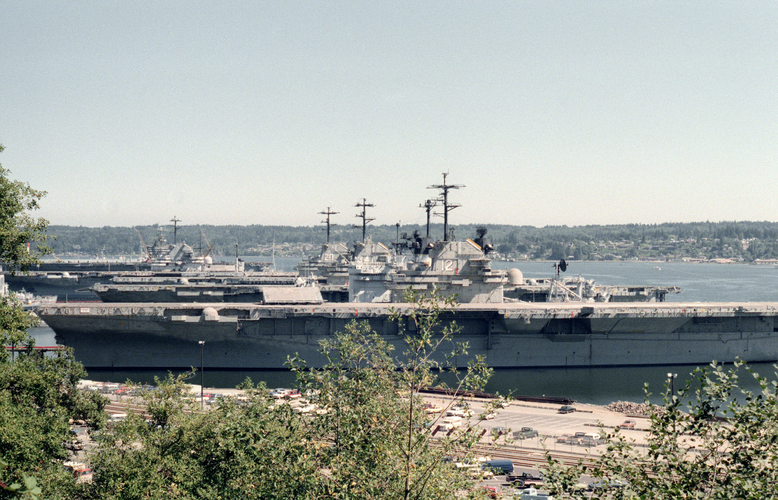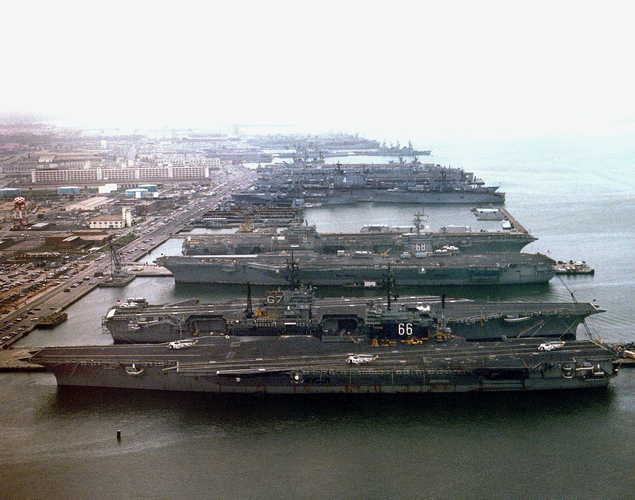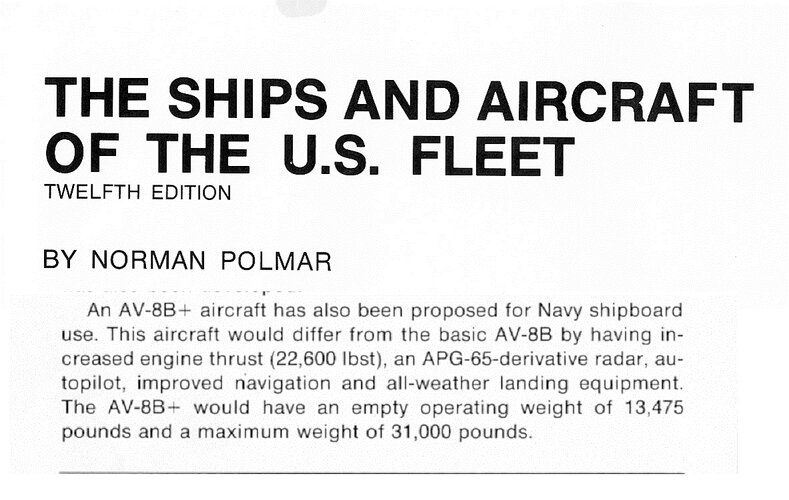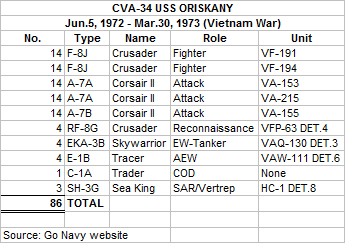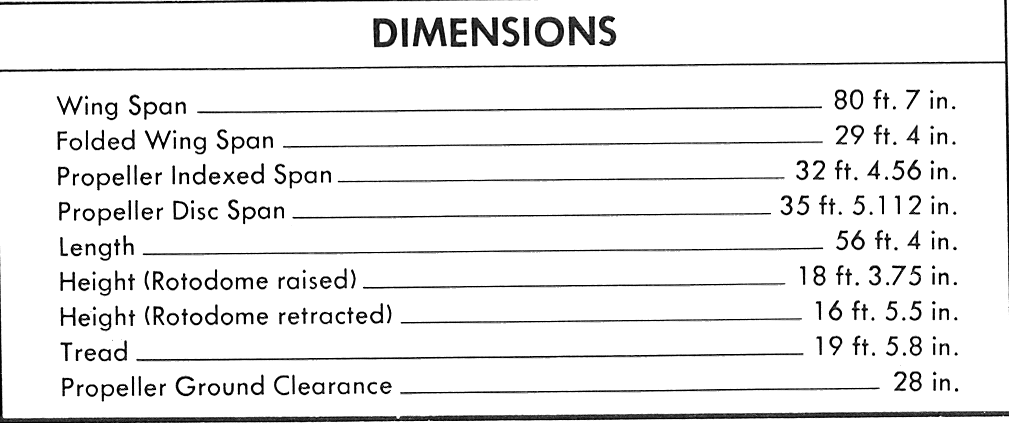During the 1980's, several Essex Class carriers remained in mothballs for potential reactivation. Does anyone know what the reactivation proposals were during the 600 Ship Navy fleet expansion period? The goal was 15 deployable carrier battle groups. Included in that number were maintenance and availability periods plus the SLEP's for the conventional Super Carriers. Beyond the then still serving USS Lexington (CV-16), the Oriskany, Intrepid, Hornet, Bennington, and Bon Homme Richard were all still in storage. I understand even modernized, these ships would not have had viable air wings for high threat environments. However, they could have operated in low threat areas, freeing-up Forrestal, Kittyhawk and Nimitz Class for other operations. Was F/A-18 small enough to operate from their decks? Was the S-3 Viking an option? I understand it would have expensive to reactive the ships and the Nimitz Class were being ordered two at a time. However, I'm curious to see everyones thoughts on how much additional life the ships had and how their air wings might have evolved into the 90's, had the Cold War not ended.
(Wikipedia) USS Oriskany (CV/CVA-34) was decommissioned on 30 September 1976, and laid up for long-term storage in Bremerton, Washington, to be maintained as a mobilization asset. Reagan Administration proposals to reactivate Oriskany were rejected by the United States Congress on the basis of her poor material condition and limited air wing capability. The cost of reactivation was estimated at $520 million for FY 1982 ($1.58 billion in 2022). At the end of the Cold War and the subsequent reduction of the U.S. Navy's active force, Oriskany was recognized as being obsolete and was struck from the Naval Vessel Register in 1989.

(Wikipedia) USS Oriskany (CV/CVA-34) was decommissioned on 30 September 1976, and laid up for long-term storage in Bremerton, Washington, to be maintained as a mobilization asset. Reagan Administration proposals to reactivate Oriskany were rejected by the United States Congress on the basis of her poor material condition and limited air wing capability. The cost of reactivation was estimated at $520 million for FY 1982 ($1.58 billion in 2022). At the end of the Cold War and the subsequent reduction of the U.S. Navy's active force, Oriskany was recognized as being obsolete and was struck from the Naval Vessel Register in 1989.
